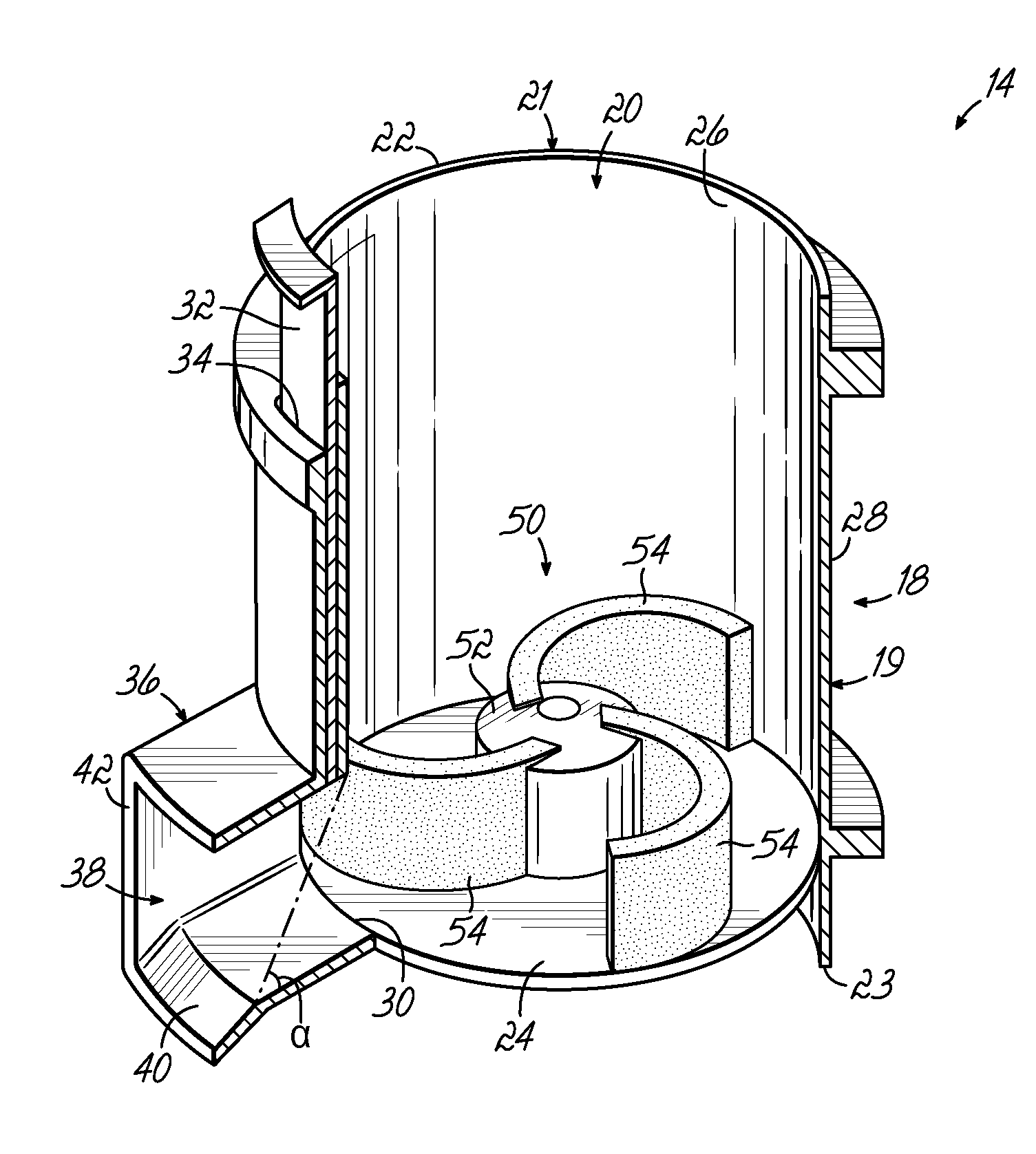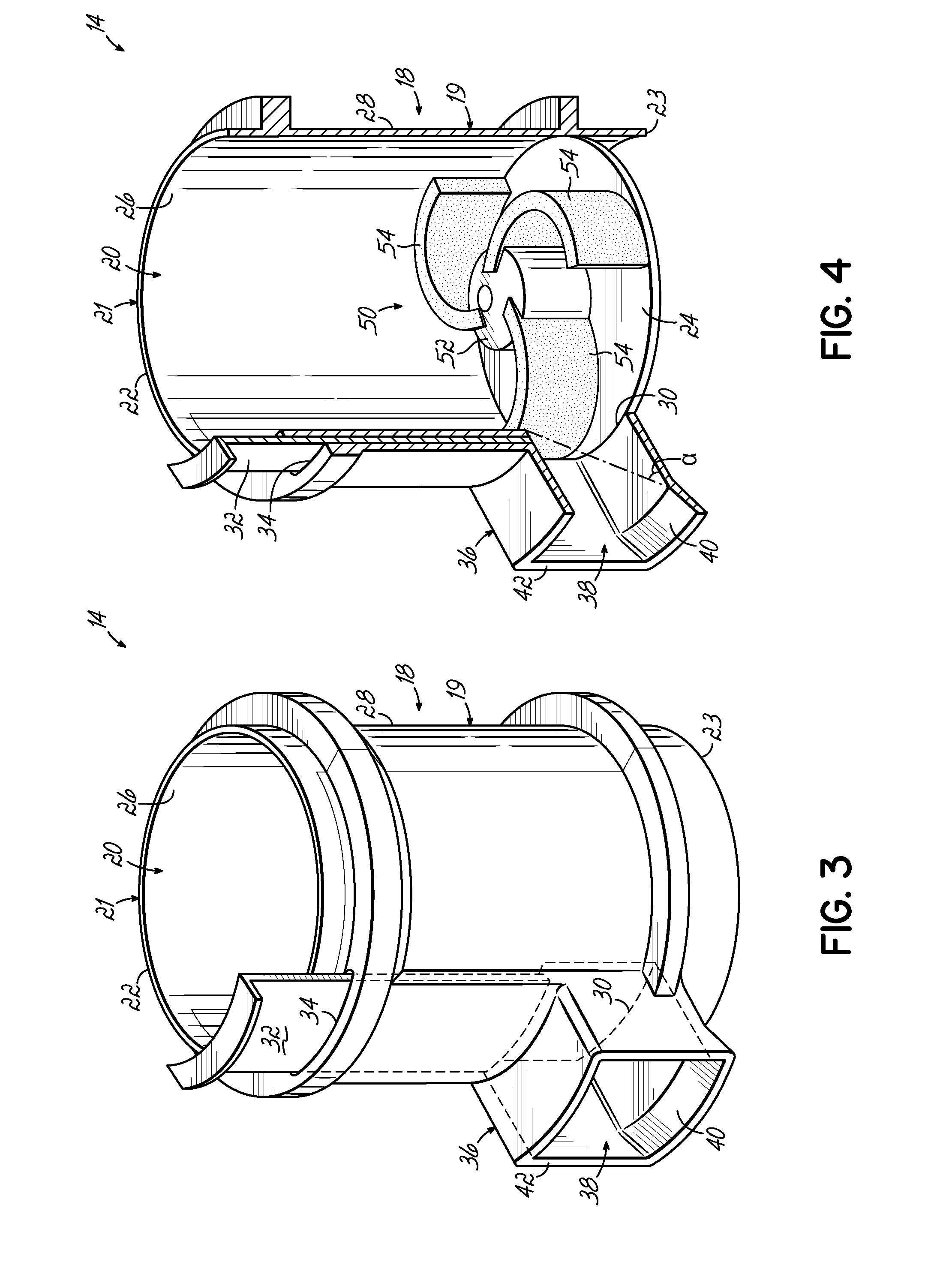Hot melt systems, feeder devices and methods for moving particulate hot melt adhesive
a technology of hot melt adhesive and feeder device, which is applied in the direction of film/foil adhesives, coatings, transportation and packaging, etc., can solve the problems of premature heating or melting of hot melt adhesive before it reaches the limit relative of the pneumatic feed system, interference with the proper transfer of hot melt adhesive, etc., and achieves less maintenance and less downtime
- Summary
- Abstract
- Description
- Claims
- Application Information
AI Technical Summary
Benefits of technology
Problems solved by technology
Method used
Image
Examples
Embodiment Construction
[0025]Referring first to FIGS. 1 and 2, components of an exemplary hot melt adhesive system are shown, including an adhesive supply 10 and a melter 12. A feeder device 14 is positioned generally between the adhesive supply 10 and the melter 12, and may be used to feed, or transfer, particulate hot melt adhesive 16 from the adhesive supply 10 to the melter 12. The adhesive supply 10 contains a bulk quantity of particulate hot melt adhesive 16, and can be a tank or hopper, for example. The melter 12 heats and melts the particulate hot melt adhesive 16 that is provided to the melter 12, turning it into a liquid hot melt adhesive that is directed to one or more points of application using devices and methods well known in the art.
[0026]Although FIGS. 1 and 2 depict the adhesive supply 10, the adhesive melter 12, and the feeder device 14 all contained within or connected with a single common housing structure 15, or housing, of a machine, it will be appreciated that various embodiments o...
PUM
| Property | Measurement | Unit |
|---|---|---|
| cylindrical shape | aaaaa | aaaaa |
| thermal | aaaaa | aaaaa |
| melt | aaaaa | aaaaa |
Abstract
Description
Claims
Application Information
 Login to View More
Login to View More - R&D
- Intellectual Property
- Life Sciences
- Materials
- Tech Scout
- Unparalleled Data Quality
- Higher Quality Content
- 60% Fewer Hallucinations
Browse by: Latest US Patents, China's latest patents, Technical Efficacy Thesaurus, Application Domain, Technology Topic, Popular Technical Reports.
© 2025 PatSnap. All rights reserved.Legal|Privacy policy|Modern Slavery Act Transparency Statement|Sitemap|About US| Contact US: help@patsnap.com



